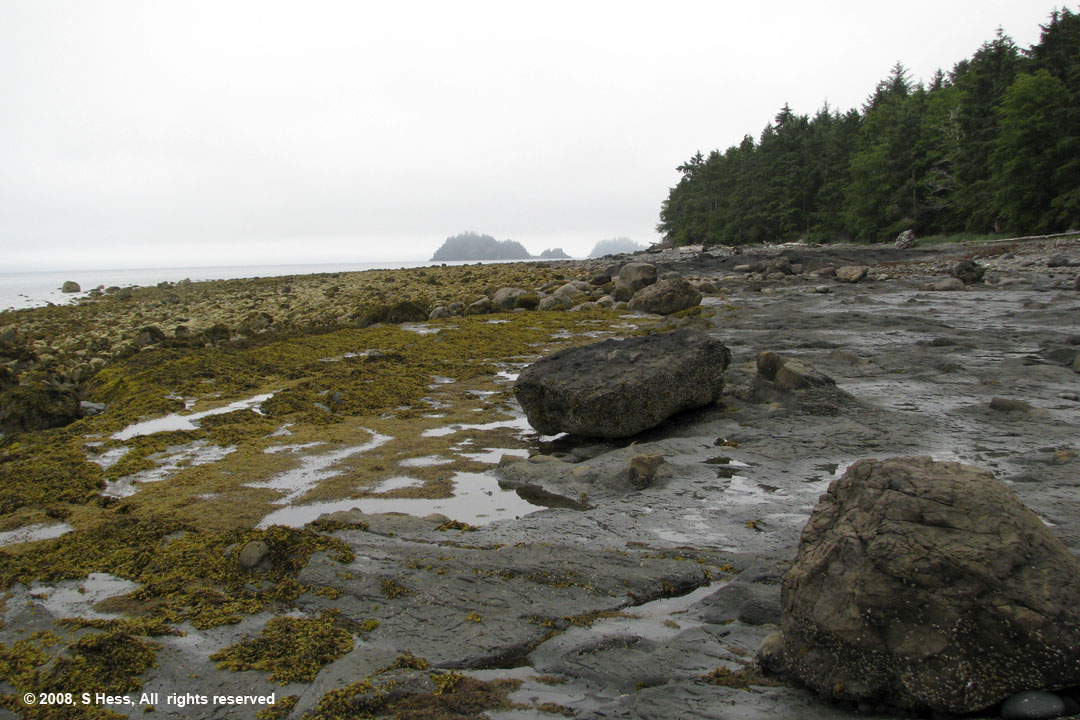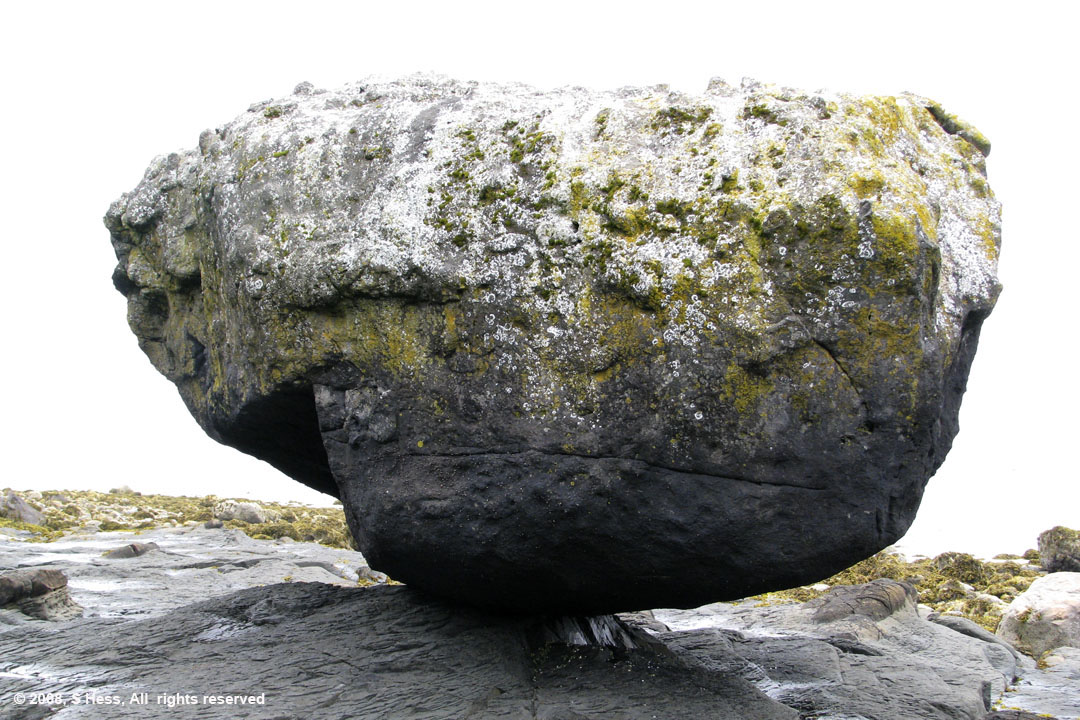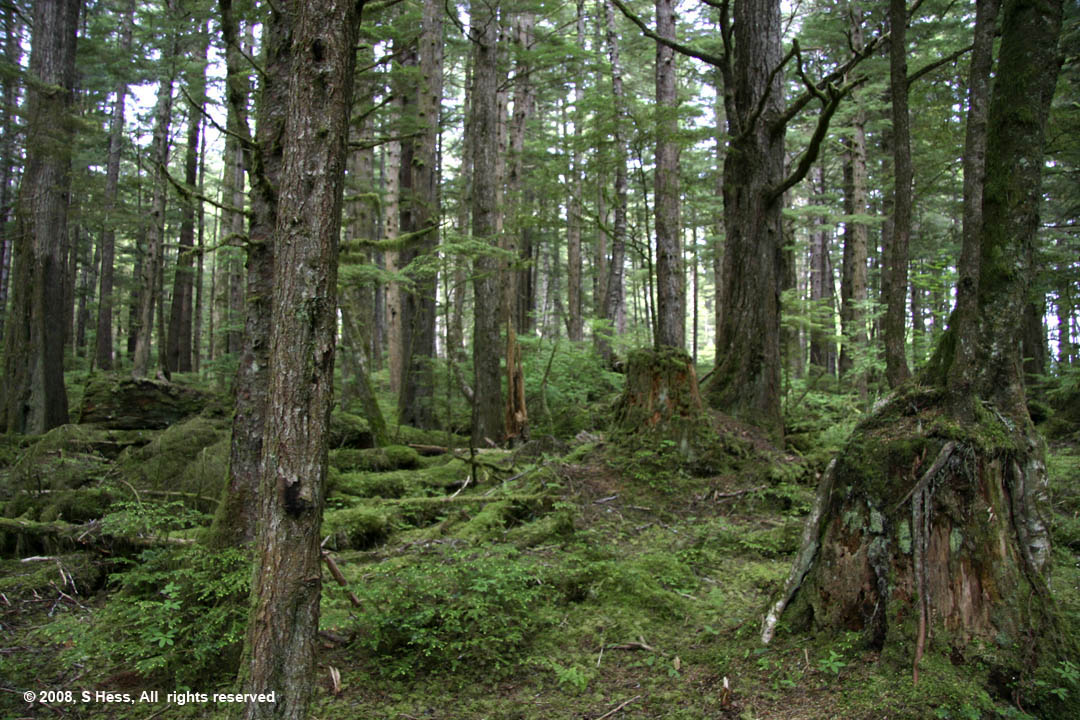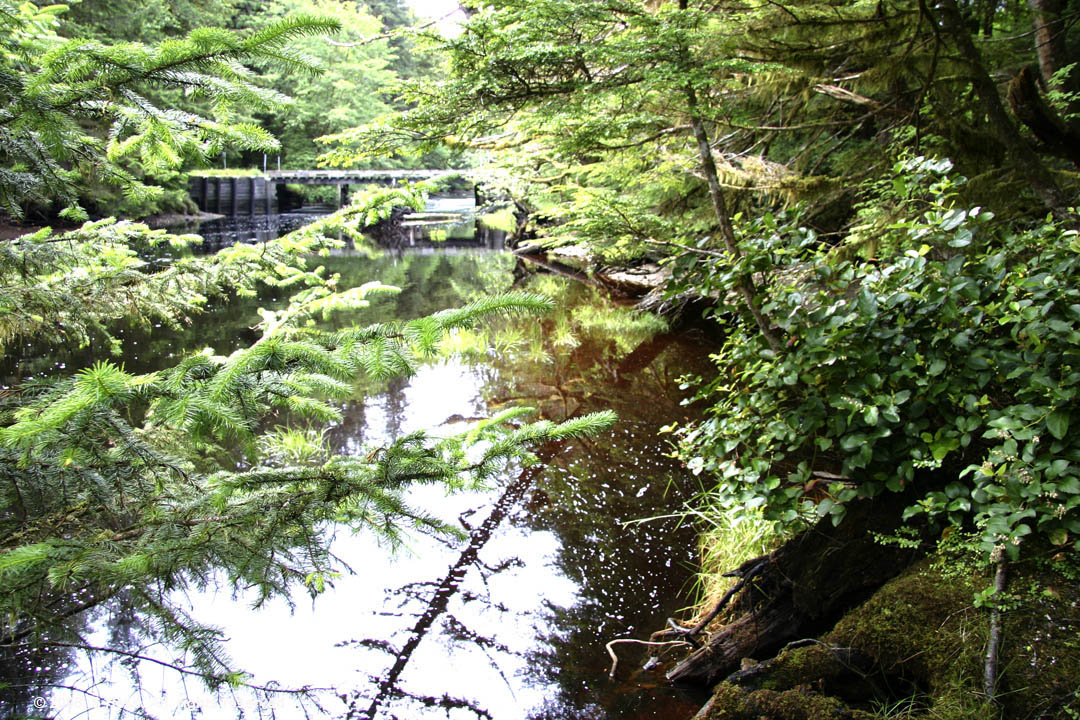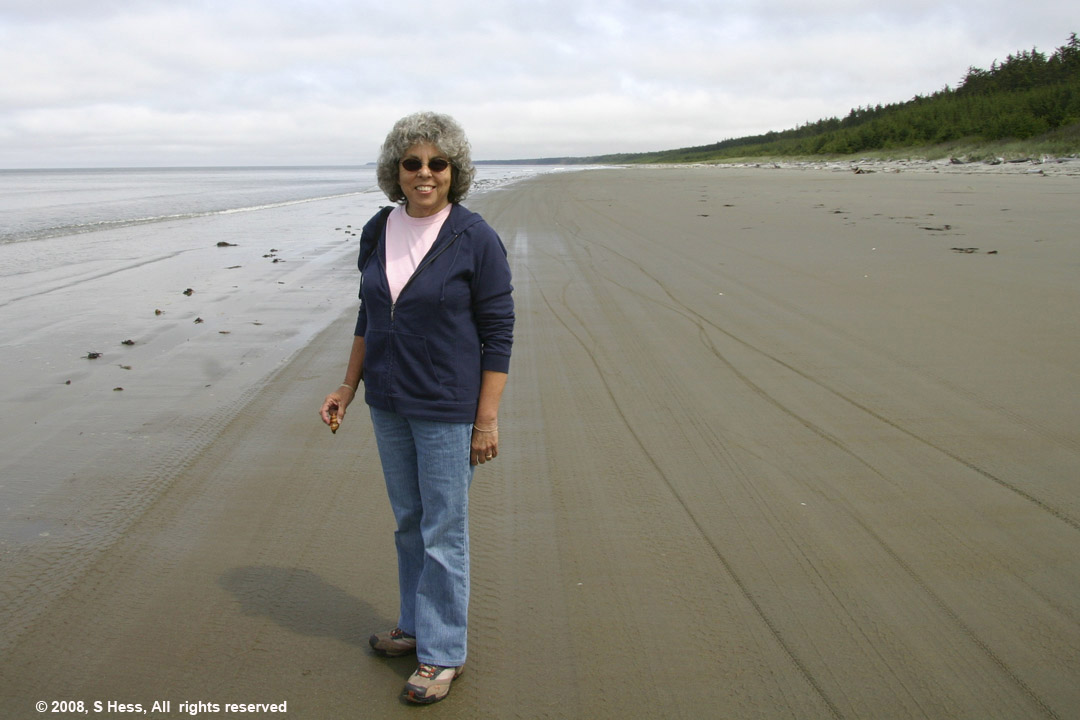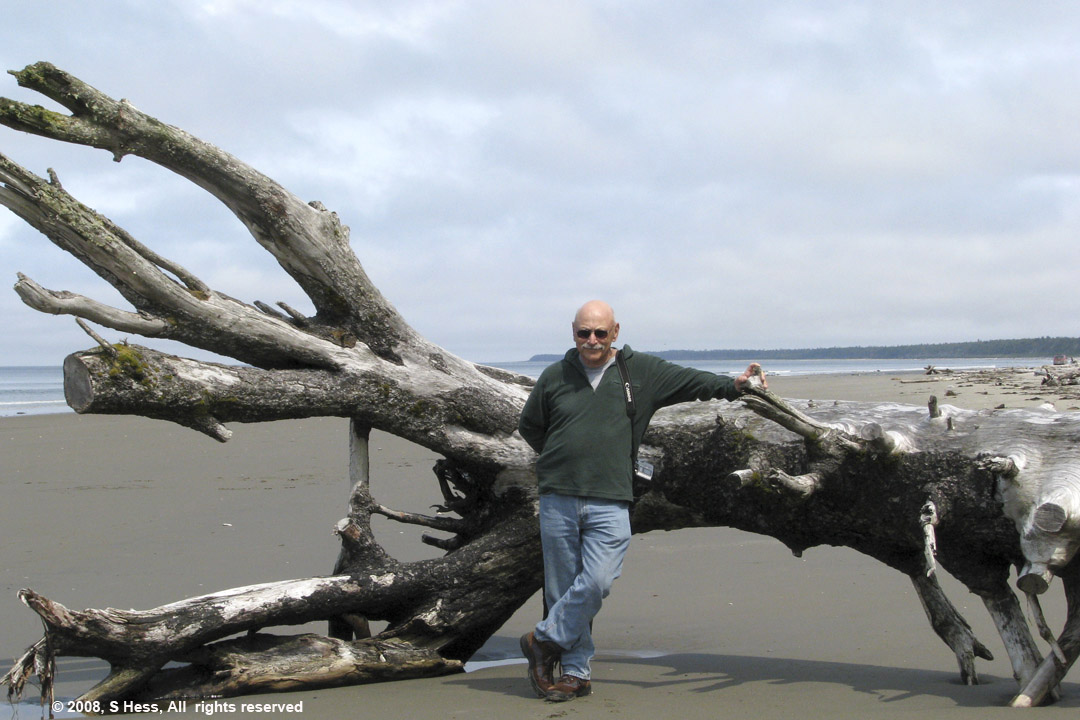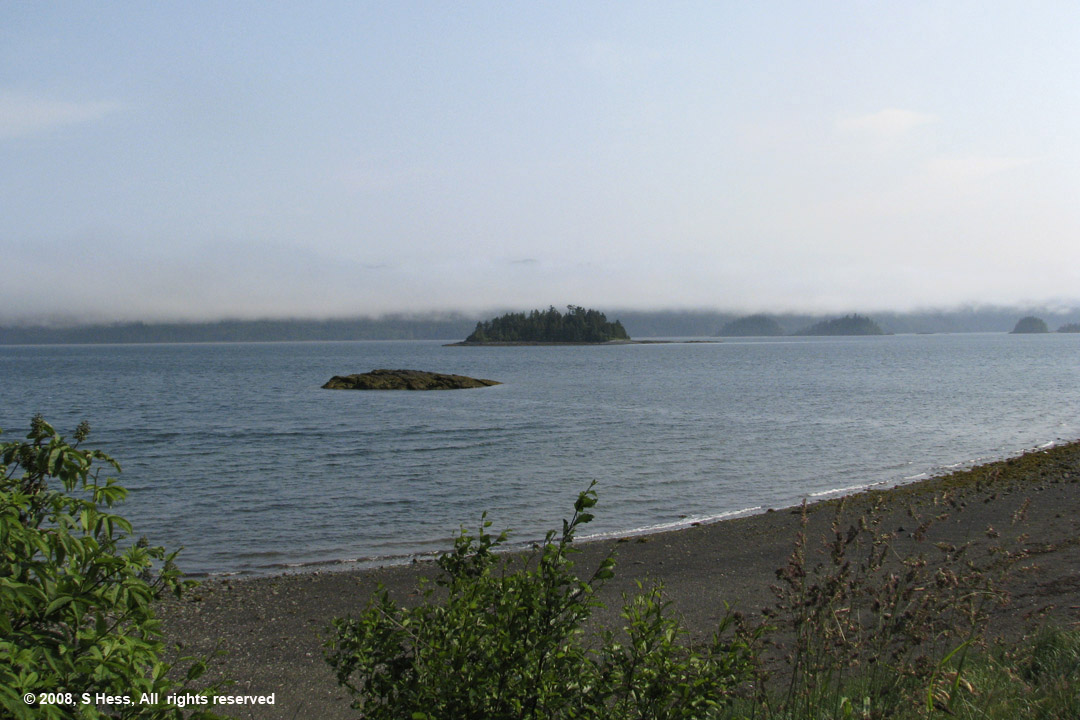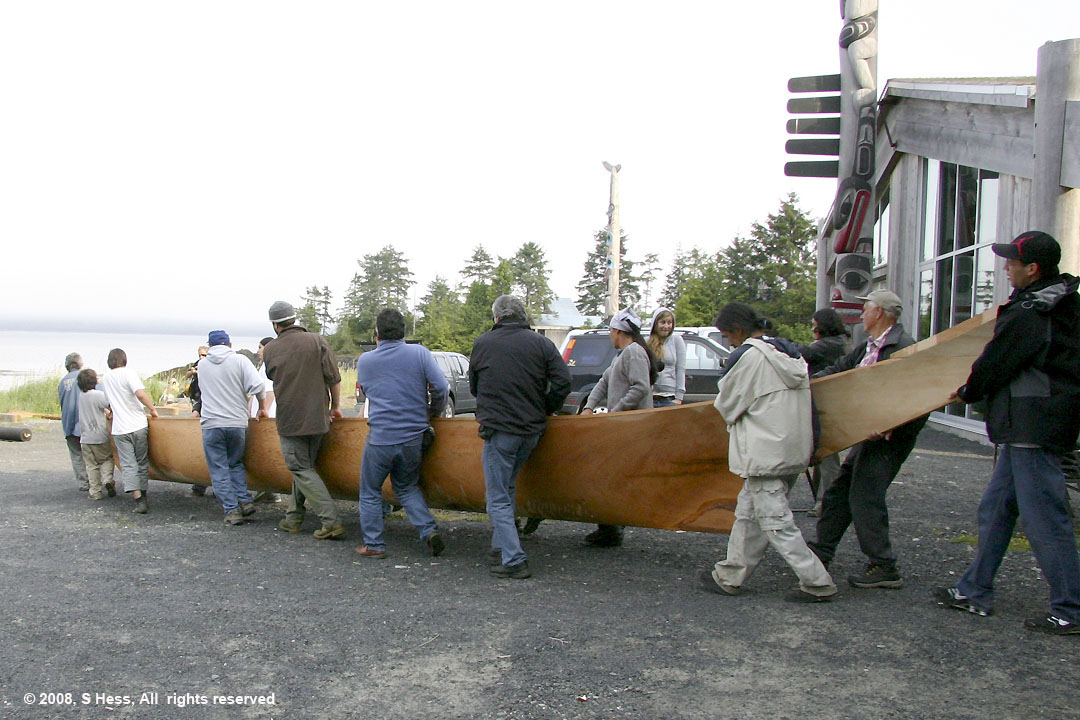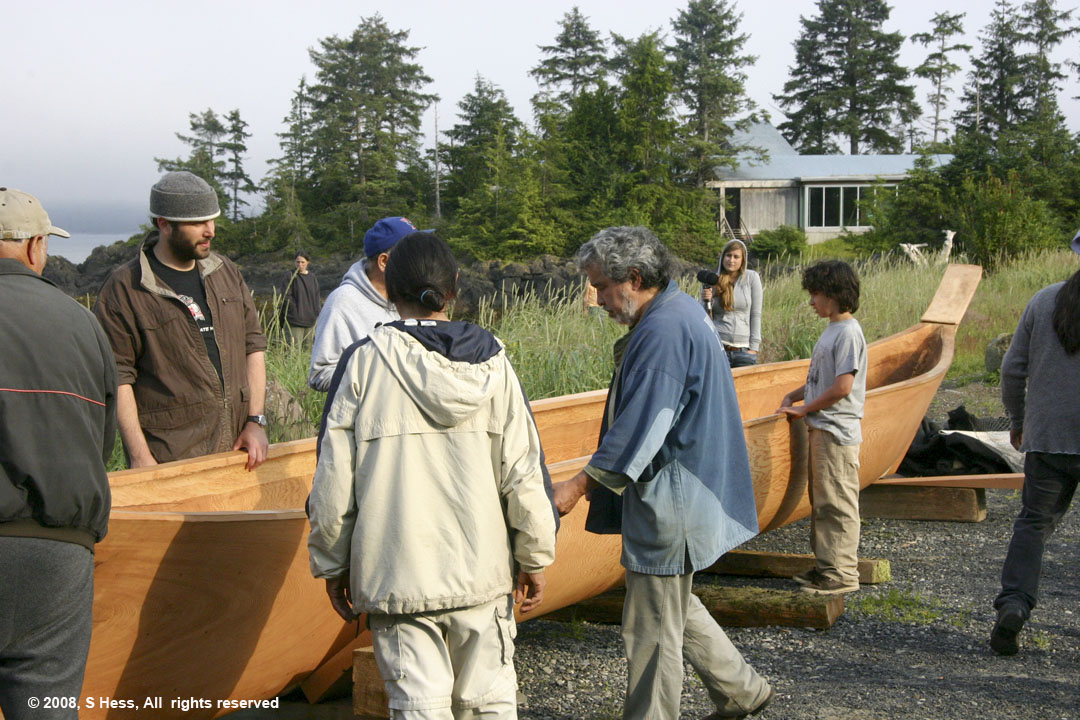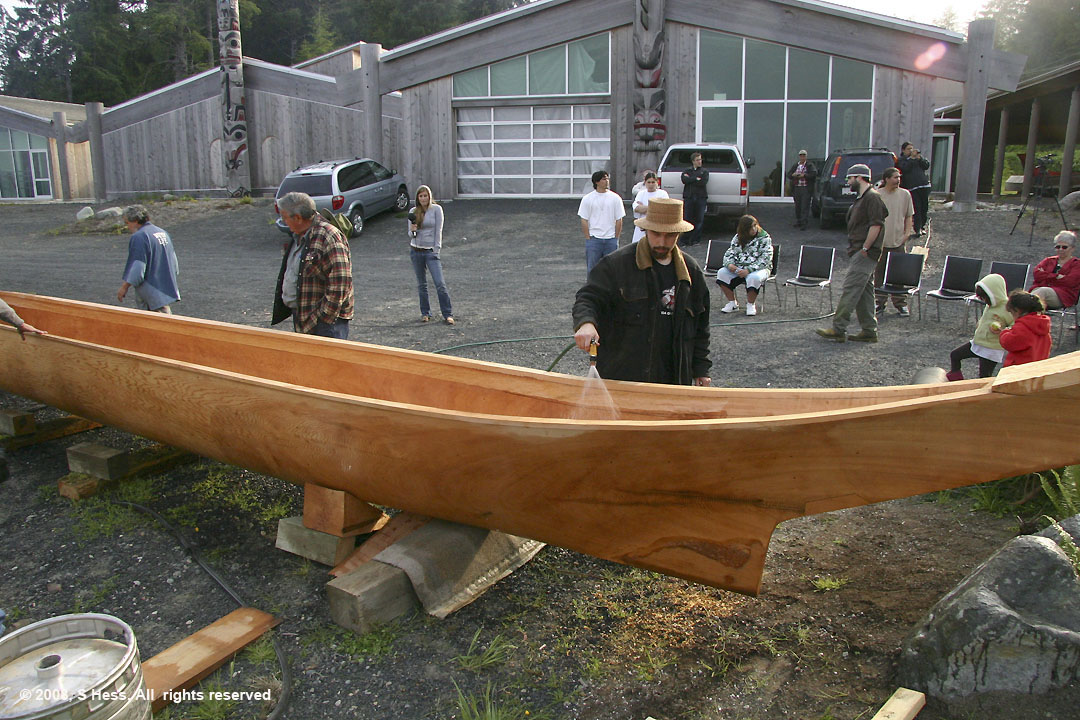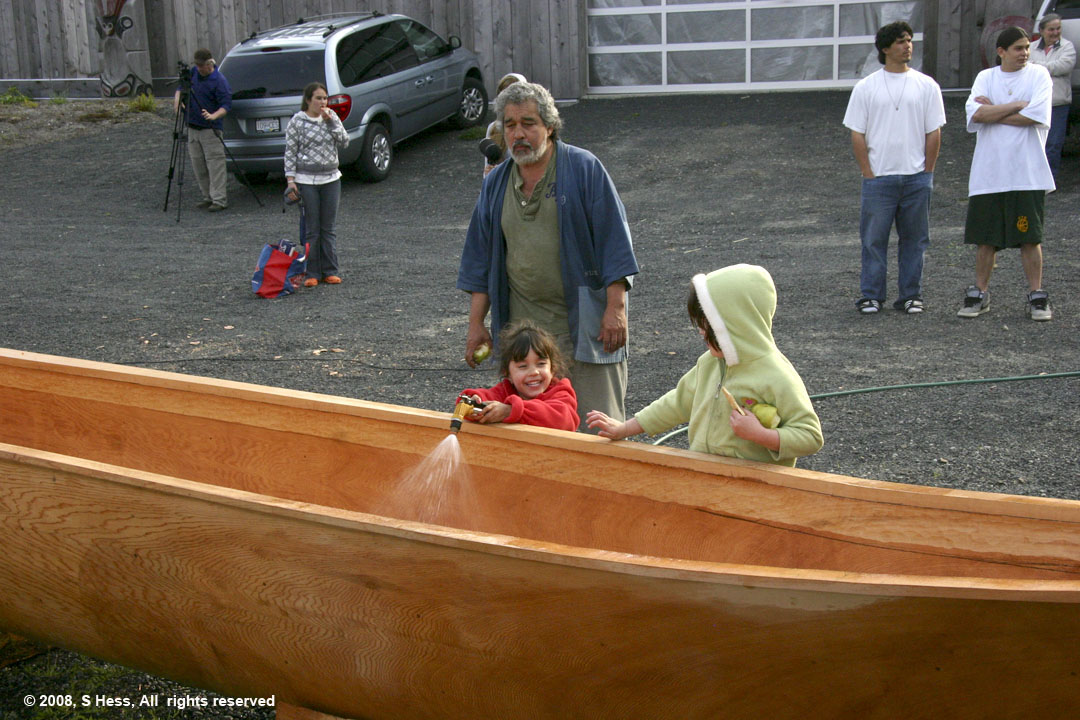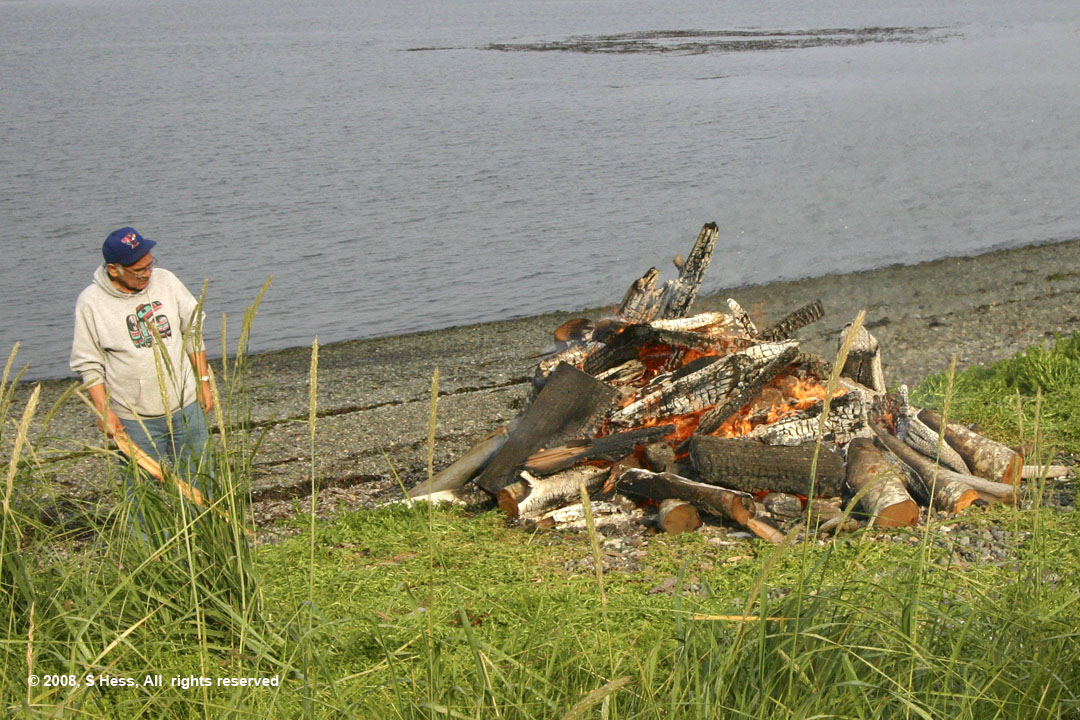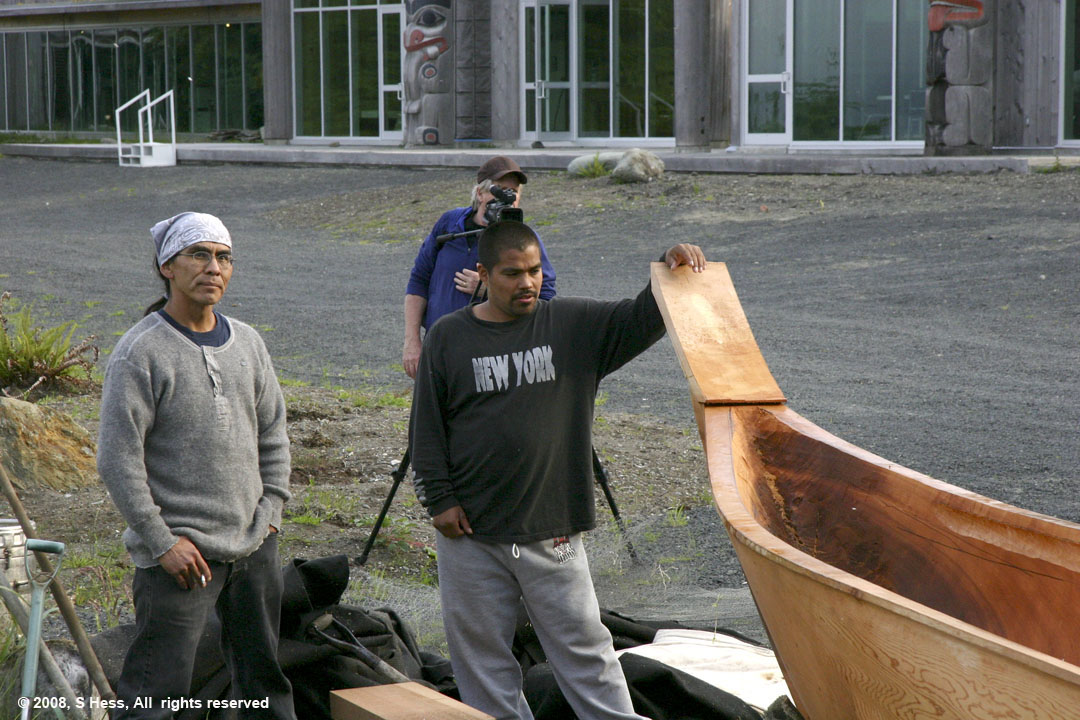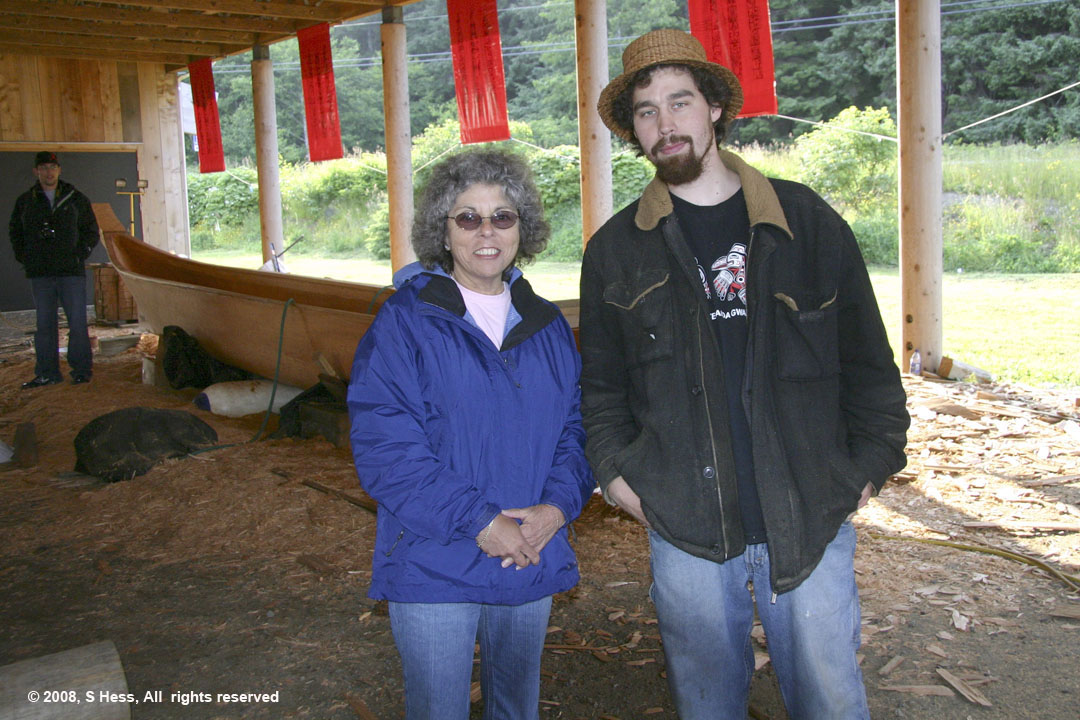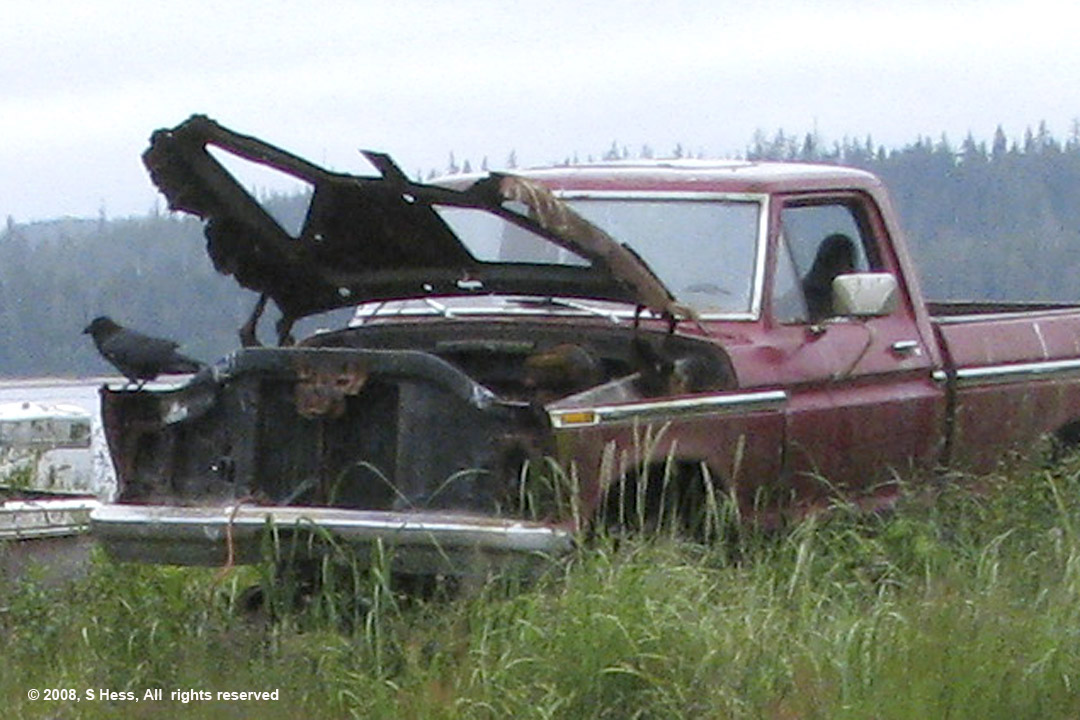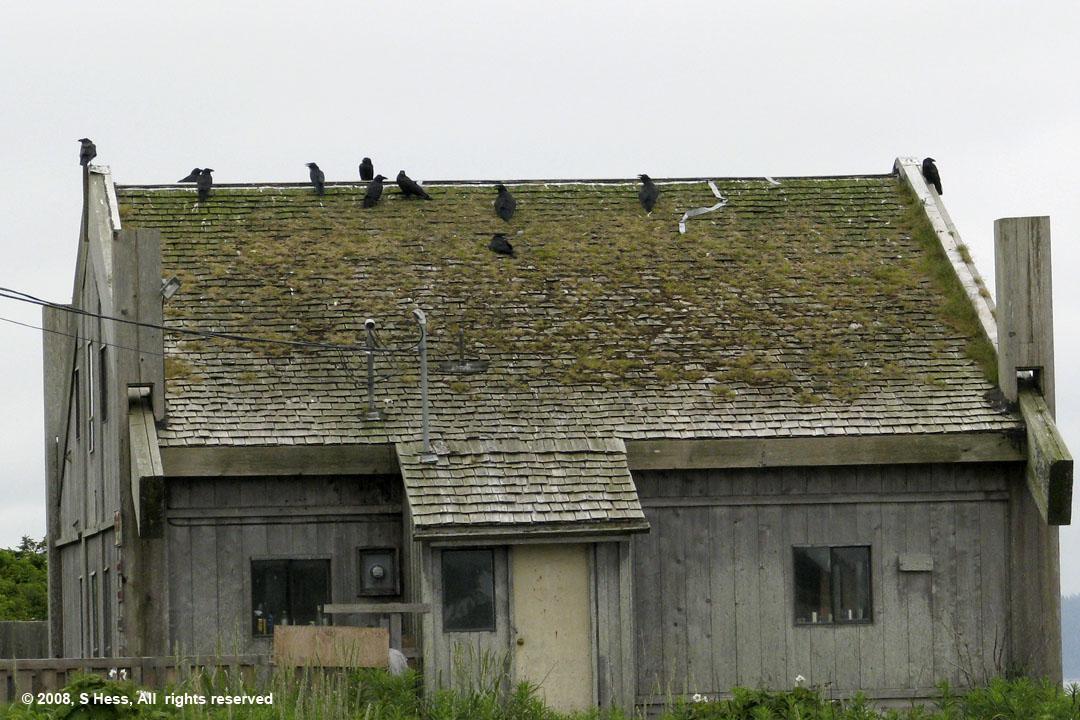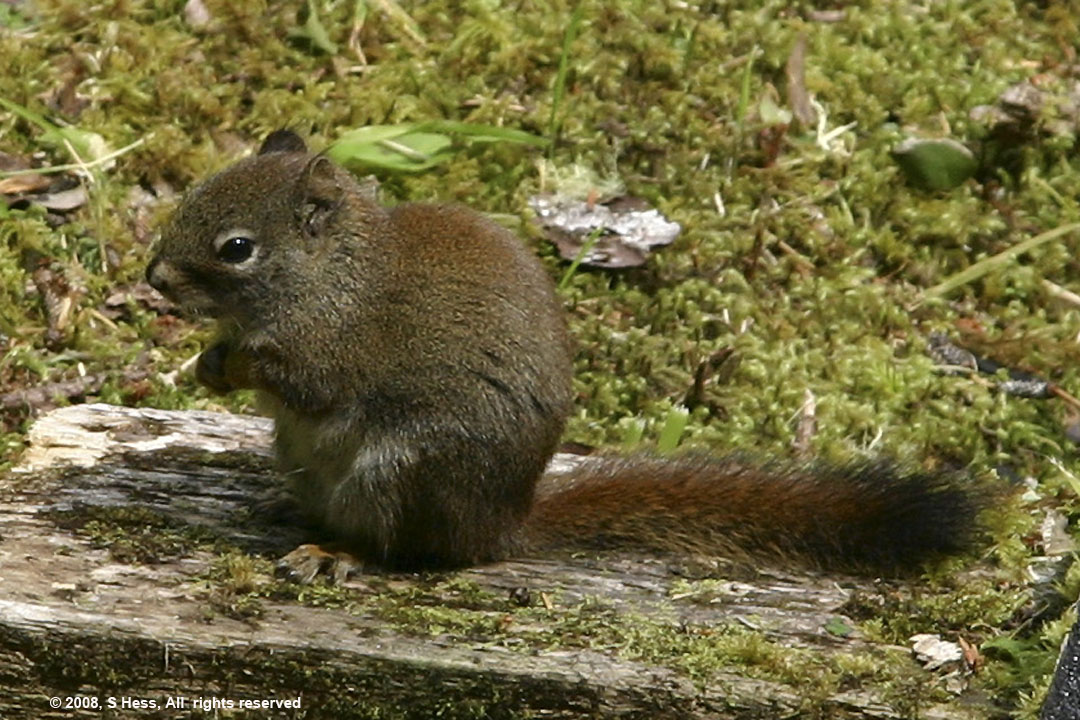
Alaska 2008
Queen Charlotte Islands, BC to Prince Rupert, BC
2 July 2008
Route Map
Route Information
Destination Map
Photographs and Commentary
Click on pictures to enlarge
A dreary morning... our first for this trip. As I looked out the window this morning I couldn't see the beautiful view we had enjoyed for the past few days. The small island that was just offshore of our hotel wasn't there and neither was anything else. A thick fog had descended on the bay overnight. We saw the first fingers of the fog coming in last night, but had not expected it be this thick by morning. The local weather forecast is for partly cloudy weather and this was far from partly cloudy.
SInce we were taking the 11 PM ferry to Prince Rupert, we had the whole day ahead of us and it turned out to be an interesting day. We were not in a hurry so we took our time checking out of the Sea Raven Motel. We headed on the Yellowhead Highway (TC 16) to the northern end of Graham Island and the western mile zero of the highway. Our initial destination was Old Masset, where a number of Haida carvers have their carving sheds/studios. Susie had contacted the shed of Christian White, one of the carvers, in an effort to make an appointment to see the studio and his work. The woman she spoke to didn't seem to have a clue about what Susie wanted but said that we should come around 1:30 PM. By the time we got to the north end of Graham Island, the sky had cleared and we had hazy sunshine mixed with some clouds.
Old Masset is part of the one of the Indian Reserves (Canadian for reservation) on the Queen Charlotte Islands. It consists of a few block fronting Masset Sound. The houses were, like many in reservations in the United States, very basic. Some were well maintained and others look like they have not seen a coat of paint in many years. In keeping with Haida tradition, some of the houses had family totem poles in front of the house that contained the family crests. We did not take any pictures of these because, unlike the museums, this is private property and the people do not like to have pictures taken of their family totems (the guide books advise visitors to get permission to take the pictures of homes and totems). We drove past Christain White's shed about 45 minutes before we were scheduled to get there and drove to the end of the road, pulled over and had our lunch overlooking Masset Sound and a bunch of raucous ravens. When we drove past White's shed at 1:30, it was closed up and Susie decided that we should not attempt a visit.
We drove through Masset and didn't see anything that got our interest and continued on to Tow Hill and North Beach on the north end of Naikoon Provincial Park. Once you get into the park, the paved road ends and it feels like you are driving through the forest primeval. The images that came to my mind were from Tolkien's "Lord of the Rings." Old growth trees draped in moss lined the road and some light filters through. The decaying remains of fallen trees are also covered in moss. By the way, the moss grows on all sides of the tree, not just the north side. We pulled over and walked a well maintained trail that ran along the Hiellen River. Here, again, we were surrounded by moss draped old growth trees. We saw tracks of large animals alongside the trail, but the most dangerous animal we saw was a red squirrel. Returning the truck we crossed the Heillen River to the end of Tow Hill Road and North Beach. We arrived at North Beach at low tide and had plenty of real estate to walk on. The beach was composed of moist hard packed sand. It would have been possible for us to drive on the beach without even having to switch to four wheel drive. We opted to walk and see what the tides washed in... not much. Susie picked up one interesting shell and we saw plenty of driftwood.
After our walk, we headed back south towards Queen Charlotte City. We made a stop at a gallery in Tlell where Susie found a print by a young Haida artist, Jaalen Edenshaw. While at dinner, we learned that one of the canoes we saw in the carving shed at the Haida Heritage Center was to be steamed into its final shape, 5 inches wider on each side. The art of carving and shaping a canoe out of a single cedar trunk was almost lost and is being revived by young Haida carvers. It turned out that Jaalen Edenshaw was one of the carvers of this canoe and we got the chance to meet him. The opportunity to see the steaming of a carved canoe was something that does not come up often. This canoe is only the third one to be completed in recent times. When we got to the Heritage Center, it was almost a party atmosphere. The President of the Haida Nation Council, Guujaaw, was supervising the process and there must have been over a hundred people helping and watching, including a number of young children who were learning about their heritage from more than a book. The canoe was carried to the beach and placed on blocks. It had been been sprayed with water to start the process. Once leveled on the blocks, boards were nailed to blocks to serve as a guage for the final dimensions. Evergreen branches were placed on the bottom of the canoe to protect it from the hot rocks. The canoe would then filled with water and the hot rocks placed in the water to heat it up. When the steaming has softened the wood, 2X4 boards would be used as wedges to shape the canoe. Unfortunately, we had to be at the ferry terminal long before the process was completed. It was tempting to miss the ferry so we can watch the entire process, but we have no leeway in our itinerary.
We arrived at the ferry terminal and checked and watched the fog roll back in. Since we had an overnight trip to Prince Rupert, we booked a cabin. By the time we boarded, it was 10 PM, so we go the cabin key from the purser and went to sleep. It was a good day.
Balance Rock
Old Growth Forest
Right, Susie in the Forest

Hiellen River stained red with tannin from decaying vegetation
Driftwood on North Beach (Picture by Susie)
Susie on North Beach
Sam on North Beach (Picture by Susie)
Fog rolling back into Bearskin Bay this evening. By the time the
ferry left the harbor, the fog had completely taken over the bay.
(Picture by Susie)
Steaming a Canoe
The ferry schedule kept us from photographing the entire process which I imagine took a good part of the night. Click here for slide show of the canoe steaming for what happened after we left. Click here for an article in Haida Laas, the newsletter of the Haida Nation, for additional pictures and text on page 15. The newsletter also has some other interesting stories about the Haida and their culture.
Canoe being carried from the carving shed to the beach
Canoe placed on blocks and leveled
Jaalen Edenshaw, one of the canoe carvers, spraying water on the interior of the canoe
Haida kids participating in the process. Seconds after I shot this, the young girl managed to spray the President of the Haida Nation Council (behind her). She missed me.
Evergreen branches placed on the bottom of the canoe to protect it from the hot stones that will be used to heat the water. The canoe will be filled with water shortly.
2X4s used as gauges for stretching the canoe
A large fire used to heat the rocks that will be placed in the canoe to heat the water used to steam the canoe
A member of the New York Clan of the Haida?
Susie and Jaalen Edenshaw, Haida artist and carver. He wearing a traditional Haida hat woven from strips of cedar bark.
Animal Friends
We know ravens are junk collectors, but this scene really surprised us.
(Picture by Susie)
This must be the Raven Clan House (Picture by Susie)
Red squirrel
The eagle on the left eating on the beach at low tide. We don't know if this was a fish the eagle caught or something that washed up with tide. The eagle eating does not have the completely white head of a mature eagle and neither is the eagle jealously watching from behind. Susie would like to think that the eagle on the right is a proud parent.
